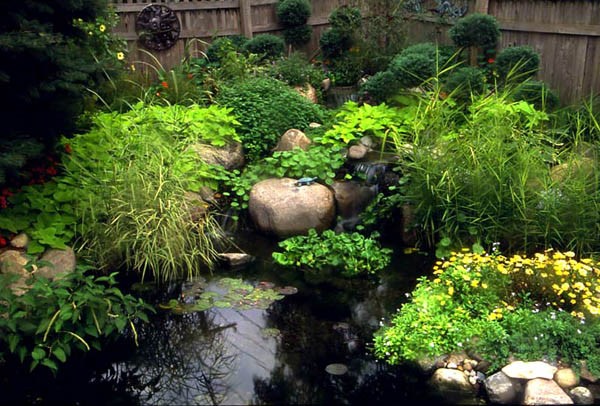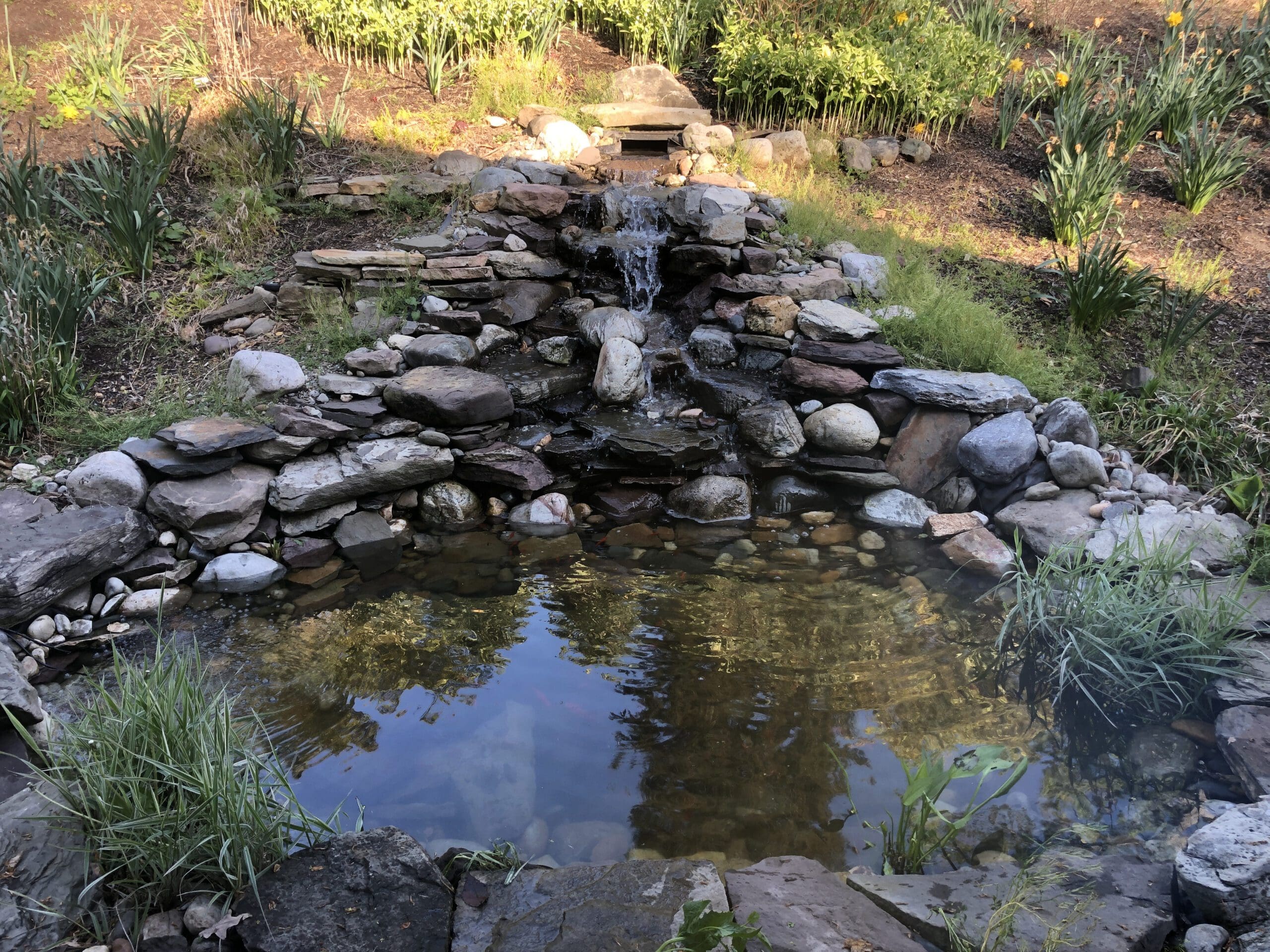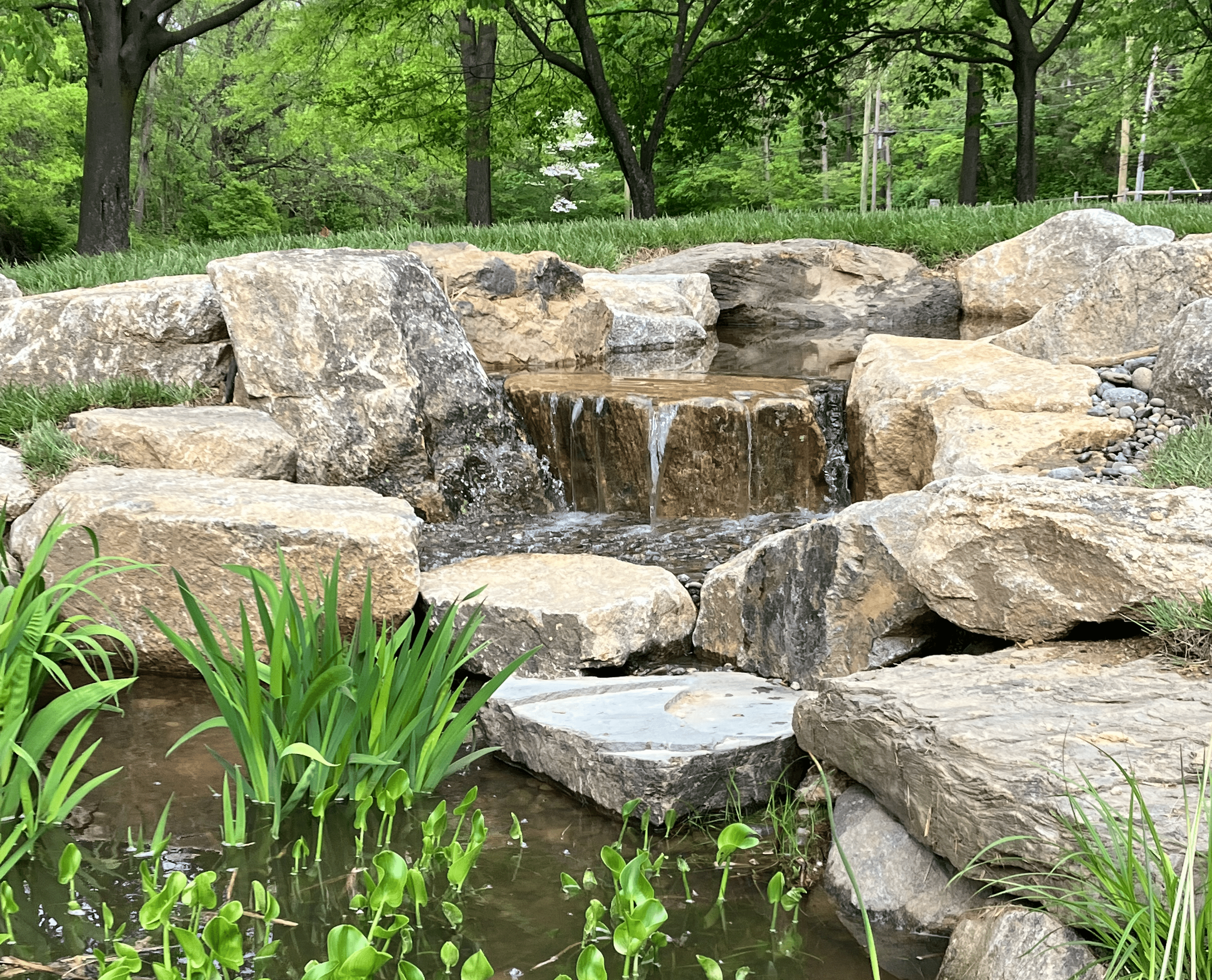Aquatic plants fulfill a variety of ecological roles. They are vital to maintaining a healthy and balanced pond ecosystem. There are four categories of aquatic plants. Submerged plants dig their roots into the pond’s bottom and thrive underwater. Emergent plants are visible primarily above water but are also rooted in the soil at the pond’s bottom. Floating plants are exactly what you might think–plants that float at or near the water’s surface with roots that either float or reach the pond’s bottom. And finally, shoreline plants prefer to root along the shore of a pond but can still handle a moist and occasionally flooded environment.
Each type of aquatic plant can offer benefits to your pond and its ecosystem. Understanding what plants bring to your pond can help you add just the right vegetation to reap the biggest benefits. Some of these benefits include…
Setting Naturalization
Plants can soften the barrier between your pond and the rest of your yard, creating a more organic, natural look rather than stiff, artificial borders. Use plants to mask pond equipment, drains, piping or other artificial structures such as fences or posts. You can even take it one step further by using unique foliage shapes and colors, aquatic blooms and interesting growth habits to add visual interest to your pond, creating a stunning waterscape you can enjoy for years.
Water Filtration via Aquatic Plants
Many aquatic plants not only absorb nutrients from the water, but also potential pollutants and heavy metals that make it into your water. They act as a natural filtration system that can keep your pond looking pristine. While overcrowded or sickly plants can die off and create murky water and excess debris, properly balanced plants are excellent natural filters.
Algae Control
Floating plants help to block sunlight from reaching the depths of your pond, which ultimately helps to minimize unsightly algae growth. Without the sun protection, algae may grow out of control, potentially clogging filters and turning water murky. Aquatic plants also absorb nutrients in the water, such as fish waste, which reduces the amount of nutrients available for algae blooms to consume. Less nutrients in your water means less chance for uncontrolled algae growth!
Erosion Control via Aquatic Plants
One of the most effective erosion control options is the use of emergent and shoreline plants. They typically have very large root structures that strengthen the soil and stabilize your pond’s shore. The more of these plants you grow, the stronger your shoreline will be.
Water Oxygenation
Aquatic plants can help raise the oxygen level of your pond’s water. This will not only make the water healthier for fish, but it will also reduce the need for artificial bubblers or oxygenators. When fish lack proper oxygen, they are more susceptible to diseases and poor health. Algae also thrives in low-oxygen water. Protect your fish and prevent algae growth by adding more aquatic plants to your pond.
Fish Shelter and Protection
If fish, frogs and other aquatic wildlife have a home in your pond, the right plants can provide safe shelter to protect them from potential predators. Your fish will also appreciate the protection from too much direct sunlight. Many fish and other wildlife will also nibble on plants as a natural food source. Aquatic plants may attract turtles, insects, ducks, geese, and some mammals to your pond to feed. Your water garden will become a wildlife oasis!
Carefully planning your use of aquatic plants will go a long way to ensuring a balanced natural pond ecosystem. Avoid adding non-native and invasive plants to your pond. There are many native plants that offer a great variety of benefits to your pond. There are grasses, rushes, reed, lily pads, irises, pickerel plants, arrowheads, shoreline shrubs, trees, and much more! Contact us for more information.






